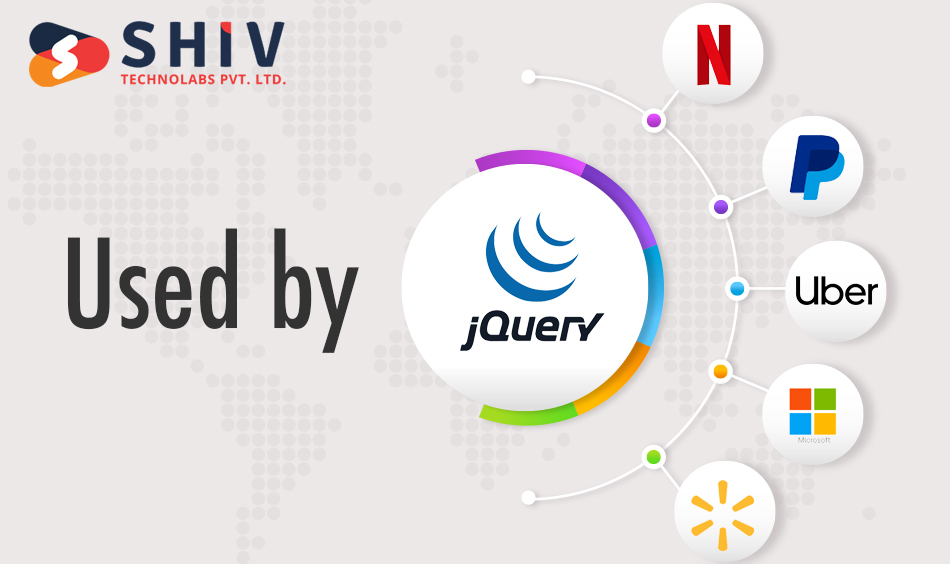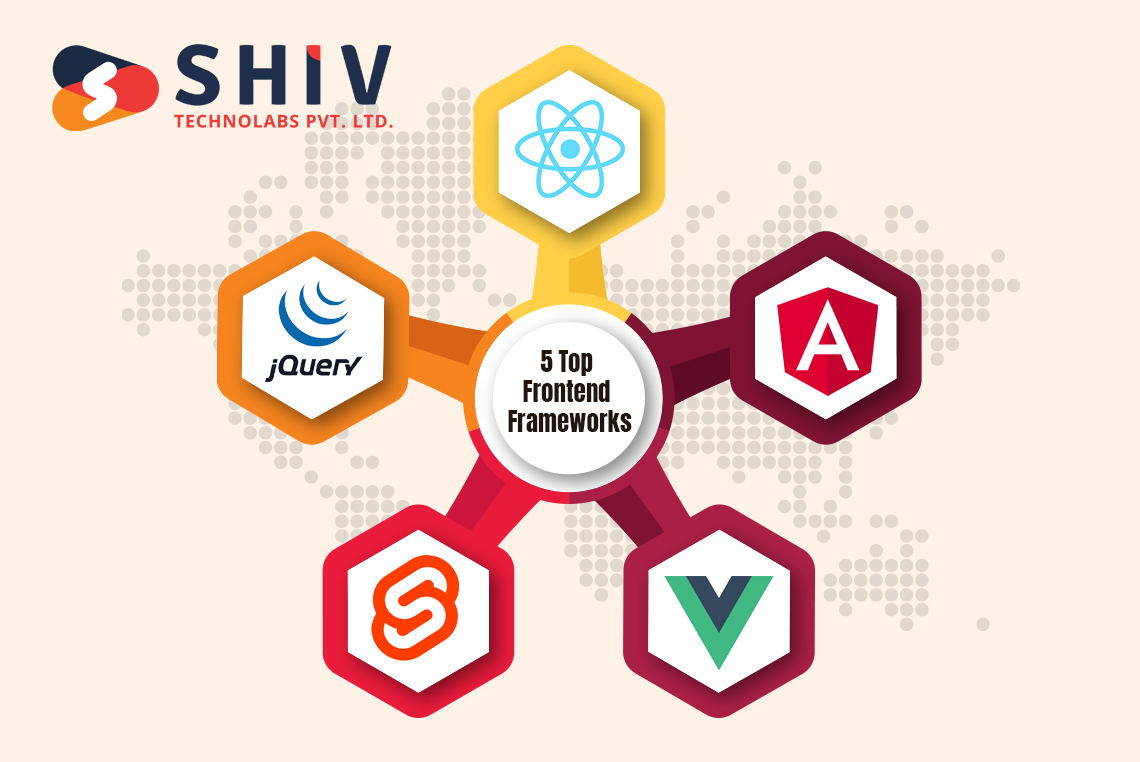Table of Contents
The significance of digitalization and online functioning has tremendously increased. Frontend frameworks, which are frontend technologies, have revolutionized the development of all software applications and are trending.
Besides the equally important backend technologies, the frontend is what users see first. First comes the interface facing the user. So, in this blog, we will look at some of the best frontend frameworks available today and widely used by most websites and web applications.
What are Frontend Frameworks?

The framework is a software tool that helps develop and maintain large projects. It is a massive collection of basic computer programs, such as codes, that programmers can use to fix general programming issues such as AJAX handling requests or creating the structure of their files. Additionally, they describe policies for architecting the application: you have a skeleton structure that must be extended and altered depending on your needs.
Frameworks refer to utility programs, code libraries, scripting languages, and other software components that enable the development and execution of multiple parts of a complex software program. Developers can use frames rather than restarting projects completely and then focusing on adding other aspects specific to the project.
In web development, the graphical user interface of a website or application is known as the frontend. In simple terms, it is the visible part of an application that visitors interact with. It must be designed to transfer information from the server side and be easy for users to operate. Therefore, frontend frameworks are software products/tools/platforms that are the groundwork for developing web solutions’ frontend components.
Best 5 frontend frameworks in web development
# React
React, also called ReactJS, is a popular front-end JavaScript library for creating user interfaces and related components. It uses the MVC design pattern, with separate layers for presentation and data abstraction. The most significant is how it manipulates documents using Virtual DOM. That is to say that HTML and XML documents are treated like trees, so their interactions with DOM are quite similar, making each HTML element an object.
Facebook-powered React is considered a fantastic library in the family of front-end tools. It uses JSX coding style, mixing HTML quotes and tag syntax to create components. Therefore, it breaks down bigger components into smaller ones, which can be managed separately and differently. Consequently, this increases the overall productivity of developers. To speed up this process and provide good-looking professional admin interfaces, developers should consider going through various react admin templates available on the market.
Pros:
- Sharing and working together on apps is improved by reusing components.
- Virtual DOM assures the smoothness and consistency of the performance.
- Writing a component in React is made easy.
Cons:
- Documentation for React dev tools may not be complete, although they serve a purpose.
- It’s difficult to create good documentation when the software updates frequently.
- This can be hard for beginners because JSX involves a lot of complexities.
- Front-end limitations.
Used by: Netflix, PayPal, Uber, Groupon, Microsoft, Walmart, Facebook, eBay, LinkedIn, Google etc.
# Angular
Angular is currently the leading web frontend framework, making it the greatest among others. It is a Typescript-based development platform that helps create highly effective and sophisticated single-page applications. Angular is a framework for building web apps as components and a set of developers’ tools to create, build, test, and modify code or a collection of closely related libraries.
You can scale single-page apps to corporate-level applications with Angular based on your needs. It is also used by YouTube and Google Translate today. In addition, it has many advantages, making it one of the most popular frameworks in the world.
Pros:
- Allow for easy adjustment of models to views.
- It cuts down on the amount of code.
- It allows components to be organized better by externalizing dependency definitions.
- Dependency Injection makes it easier to manage reusable components.
- A large, vibrant community provides ample learning materials and support.
Cons:
- Different Angular approaches make it hard for first-time users.
- Complex and huge dynamic app.
Used by: Forbes, Xbox, Blender, Gmail, Upwork, PayPal, Microsoft Office, Deutsche Bank, Santander, etc.
# Vue.js
This framework uses a gradual approach to accommodate fresh features. Vue.js has been building lightweight and customizable UI components, hence being considered one of the most effective JavaScript libraries. It provides a flexible and straightforward API for reactive data elements. One can start by doing small projects and scale up.
Vue.js is small and, thus, easy to install and download. Small and large-level templates are possible, saving time and effort because mistakes can be identified promptly. It simplifies binding with existing applications and has a lot of documentation. Lastly, it helps developers understand other frontend frameworks like Angular.js, React.js, etc. Its MVVM architecture makes it simpler to manipulate HTML blocks.
Pros:
- Small and quick
- Suitable for starters
- Comprehensive guidelines
- Easy to understand code structure
- Two-way data binding
- Helps with SEO positively
Cons:
- Language obstacles and no plugins.
- This is a new language developed by individuals or small groups.
- Fewer developers know this language.
- Could be impractical in bigger projects.
- The business aspect of it is weaker than others.
Used by: Netflix, Facebook, Grammarly, Trivago, GitLab, Xiaomi, Adobe, Alibaba, Reuters, Nintendo, etc.
# Svelte
Svelte is one of the best JavaScript compilers for producing high-performance user interfaces. Rich Harris developed it in 2017, and it’s still a work in progress. However, Svelte is unique among frameworks because it doesn’t use a virtual DOM but instead uses a customized JavaScript Virtual Machine to handle UI creation matters. This has allowed Svelte to be as fast as ten times faster than other platforms, such as Angular and React Frameworks.
Svelte is your best choice if you require a small and fast application developed by a small group of frontend developers, including beginners. Website Developer courses can be taken to become a frontend developer. Because it is still a little-known frontend framework and its community is very limited, avoid using Svelte for large project development. You may not find the needed assistance and tooling.
Pros:
- Better response time
- Faster than Angular or React
- Most recent of all
- Framework that scales high
- Lightweight, uncomplicated, and uses existing JavaScript libraries.
Cons:
- Few users
- Inadequate backing
- No instruments available for it
- It is not yet very famous
Used by: Philips BlueHive, Cashfree, Chess, Godaddy, HealthTree, Rakuten, Razorpay.
# jQuery

Regarding the oldest frontend frameworks, jQuery is one of them and is still preferred by many programmers. John Resig made jQuery an amazing, fast, compact, and efficient frontend JavaScript library. It is a cross-platform library meant to simplify client-side HTML scripting.
The API works in many web browsers, allowing developers to easily perform tasks like event handling, Ajax, animation, document traversal, or manipulation in jQuery. Thanks to jQuery, being extensible and flexible has changed designers’ approach to writing JavaScript. That’s why over forty-one million websites use jQuery.
Pros:
- Additing and removing elements is very possible with this adaptable DOM.
- Sending of HTTP requests has been made more accessible.
- It allows for dynamic content.
- HTTP requests are improved in their operational mode, which makes them streamlined.
Cons:
- There is a slow working speed comparatively.
- JQuery, which has too many other advanced alternative options, is already obsolete as the APIs of the document object model are outmoded.
Used by: Twitter, Bank of America, Uber, Twitter, and JPMorgan Chase.
Conclusion
Regarding the best frontend frameworks, the market epitomizes a huge variety. What is more important, UI developers can choose from the most innovative ones.
Angular, Vue.js, and React are some of the JavaScript UI frameworks that have emerged as leaders in their respective markets. These frameworks are characterized by immense community support and selected for their unique flexibility and features. Contact Shiv Technolabs – Best Web Development Company if you need assistance with implementing an outstanding web application using the best frontend framework.





















